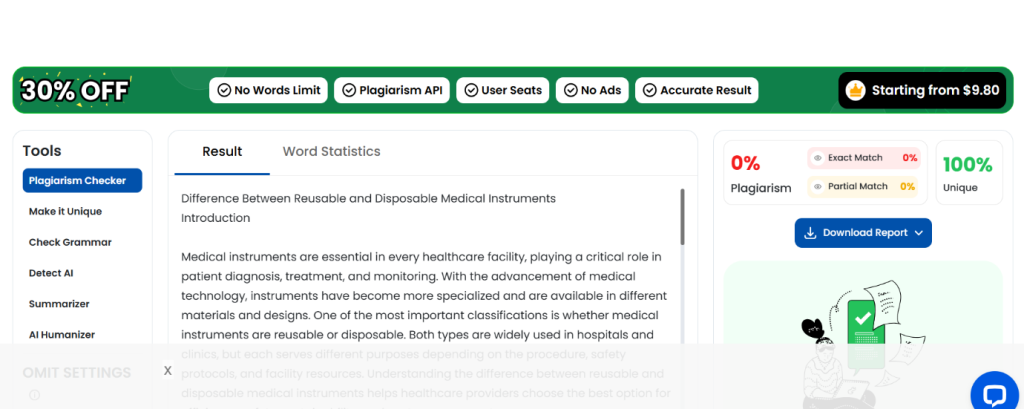
A patient monitor is one of the most essential medical devices in any healthcare facility. It continuously tracks critical health parameters such as heart rate, blood pressure, oxygen saturation, respiratory rate, and temperature. Whether used in emergency rooms, operating theaters, outpatient clinics, or general wards, patient monitors help healthcare professionals detect changes in patient conditions instantly. However, choosing the right patient monitor is not always easy. Clinics vary in size, specialization, workload, and available infrastructure. Therefore, selecting the right device requires careful consideration of features, reliability, and clinical needs. This article provides a detailed guide to help medical professionals choose the most suitable patient monitor for their clinic.
Assess Your Clinical Requirements
The first step in selecting a patient monitor is understanding the type of patients your clinic treats and the level of monitoring required. For example, a general clinic managing routine check-ups may only need basic vital signs monitoring. In contrast, clinics handling high-risk cases, cardiac patients, or surgical procedures require advanced monitors with more complex parameter tracking.
It is important to determine whether the monitor will be used continuously for critical patients or occasionally during routine visits. Clinics with steady patient flow and specialized departments should consider monitors that support multi-parameter monitoring and continuous data recording.
Types of Patient Monitors
Patient monitors come in different forms based on the clinical environment:
Selecting the right type depends on how frequently the monitor will be moved and the level of patient care required.
Key Parameters to Monitor
Different healthcare settings require different vital signs to be measured. While most patient monitors measure basic parameters, advanced models offer more comprehensive data. Important parameters include:
Advanced models may also track:
Before purchasing, healthcare providers should review which of these parameters are essential for their patients.
Display and User Interface
The screen size, resolution, and user interface play a major role in efficiency. Medical staff must be able to clearly see patient data, especially during emergencies. Touchscreen displays with intuitive menu navigation help nurses and doctors operate the device quickly. A display with adjustable brightness is useful in different lighting environments.
Additionally, the ability to view multiple waveforms at once helps clinical teams observe changes more effectively.
Battery Performance and Power Backup
For portable patient monitors, a strong battery life is crucial. Monitors used in transport situations must continue running even if power sources are not immediately available. Clinics should choose devices with long battery backup to ensure patient safety during movement or power outages.
Connectivity and Data Management
Modern patient monitors are often connected to digital systems for storing and reviewing patient data. Connectivity options like Wi-Fi, Bluetooth, and compatibility with Electronic Medical Records (EMR) help streamline patient monitoring. Some monitors provide remote monitoring capabilities, allowing doctors to review data without being physically present.
Clinics should evaluate whether the monitor can integrate smoothly with existing hospital systems.
Durability and Build Quality
Patient monitors must be durable enough to withstand daily usage and frequent cleaning. Portable and transport monitors must resist accidental drops and impacts. Choosing products from reliable manufacturers ensures safety, accurate readings, and long operational life.
Water and dust resistance can be useful features in clinics with heavy workflow.
Alarm System and Safety Features
An effective alarm system is essential to alert staff when a patient’s vital signs go out of range. Alarms should be customizable based on patient condition to avoid alarm fatigue. Additional safety features like arrhythmia detection and apnea alarms can improve emergency response.
Budget and Long-Term Costs
Price plays an important role when selecting medical equipment. The decision should not be based only on the upfront cost but also on long-term maintenance, software upgrades, accessories, and training needs.
Affordable models may lack advanced functionality needed for critical care, while high-end models may exceed the clinic’s requirements. The best option is a cost-effective device that meets current and future needs.
Training and Technical Support
Healthcare workers must be properly trained to use all features of the patient monitor. Clinics should choose suppliers who provide installation support, user training, and quick technical assistance. Having reliable after-sales service minimizes downtime and ensures the device performs accurately throughout its lifetime.
Conclusion
Choosing the right patient monitor is essential for maintaining high-quality healthcare services. By evaluating patient needs, monitoring parameters, type of usage, connectivity, durability, and budget, clinics can make a well-informed decision. A suitable patient monitor improves patient safety, supports early diagnosis, and enhances workflow efficiency. Investing in the right equipment ensures that healthcare providers can deliver timely and effective care to every patient.
If you are unable to find your desired product on our website, please don’t hesitate to contact us through the Contact Form. Our team will be happy to assist you with product availability, custom requests, or further information.
Agree Decline